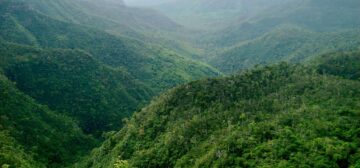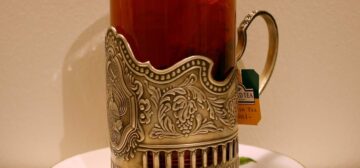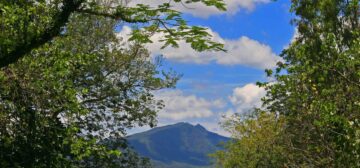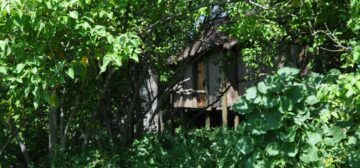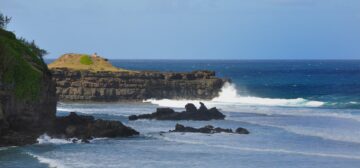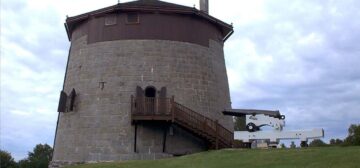Mauritius
Mauritius offers a world-in-one island experience! With enchanting beaches and luxurious accommodation, it is the perfect place to relax and rejuvenate. This historically rich island has a lot more to offer than beach relaxation; you can enjoy hiking through the Black River Gorge, visiting colonial tea plantation houses, Hindu temples, or inland nature reserves, or learning more about the country’s sugar industry. The shallow coral reefs surrounding the island also offer endless opportunities to try your hand at a wide variety of water sports.
General Information
The British took control of the islands during the Napoleonic Wars, and Mauritius became independent from the UK in 1968. The main languages spoken in Mauritius are Mauritian Creole, French and English. English is the only official language but most of the television programmes are in French.
The island of Mauritius is renowned for having been the only known home of the dodo. This bird was an easy prey to settlers due to its weight and inability to fly and became extinct less than eighty years after the initial European colonisation.
Because it is an island destination, the smells, noises, and bustle of the mercantile capital Port Louis are never far away, while the busy garment markets in the Central Plateau towns of Quatre Bornes and Curepipe and Black River Gorges National Park’s dramatic virgin forests, give the lie to Mauritius being just another beach destination.
The beaches range from stunning sand-rimmed lagoons and popular wide public beaches to the picturesque islands off the country’s coastline; there’s truly something for everyone here. Add to this the joys of Chinese, Indian, French, and African cuisine, the rousing beat of séga music and the infectious party spirit of the locals, and you soon understand why Mauritius really is so many people’s idea of paradise on earth.
Geography – Environment
The island of Mauritius lies about 800km East of Madagascar. It is only 61km long and 46km wide. The island was formed approximately 10 million years ago by an under-water volcanic eruption. Mauritius has about 350km of coast, most of which is protected by coral reefs. Mauritius is surrounded by a number of smaller islands, many of which are used as nature reserves for endangered species. The climate on the island is tropical, with dry winter months from May to November and hot, humid summers from December to April.
As of 2001 about 1.8% of the nation’s land mass had been set aside as protected area, and Mauritius is ranked high up on the list of countries with the most endangered species.
History, Culture and Politics
Like the Seychelles, Mauritius was probably discovered by Arab traders in the ninth century. When the Arabs arrived on the island it was inhabited, but there is no documented proof that any other civilisations visited the island. The Arabs weren’t interested in the island, and Portuguese adventurers re-discovered the island in 1507. When the Portuguese discovered Mauritius they were not interested in taking possession or settling on the island, their trade routes with India were more important to them in this period, so they preferred to settle along the Mozambique coast.
In 1622, Danish adventurers arrived, hoping to exploit the ebony with which the island abounded. The French and British, too, began to see possibilities both for trade and strategy in the area and they sent out expeditions in 1638. Their ships arrived too late. In May 1638, Cornelius Simonsz Gooyer had set up the first permanent Dutch settlement in Mauritius. He was sent by the Netherlands East India Company and became the first governor, over a population of 25 colonists who planned to exploit the island’s resources of fine ebony and ambergris, rearing cattle, and growing tobacco.
Over the next few years, a hundred slaves were imported from Madagascar and convicts were sent over from Batavia (Java). The free colonists came from Baltic and North Sea Ports. They were hardened men who were settlers out of desperation and coercion rather than through brave ideals. By 1652, many Dutch left for the Cape of Good Hope which offered better prospects. Other attempts at colonisation failed miserably because of cyclones, flood, drought, and plague. Food shortages, an overall inefficient administration and attacks by pirate ships compounded the desire to leave, and in 1710 the last settlers abandoned Mauritius.
In September 1715, Guillaume Dufresne d’Arsel took possession of Mauritius in the name of King Louis XV of France. He named it the Ile de France, placed the French flag near what is now Port Louis. He drew up a document witnessed by his officers declaring the island as being French and sailed away after three days.
The transformation of Port Louis from a primitive harbour to a thriving seaport was largely due to the efforts of Bertrand Mahe de Labourdonnais, an aristocratic sea captain. The wretched conditions of the settlers dismayed Labourdonnais. Labourdonnais transformed the island into “the star and key of the Indian Ocean”. The thatched huts were demolished and in their place he raised forts, barracks, warehouses, hospitals and houses. Government house was built of coral blocks, roads were opened throughout the island and a ship building industry started.
Although he had to import slaves, Labourdonnais made their lot easier and turned many of them into artisans. He also started an agriculture programme that concentrated on feeding the islanders and on marketable products. On his own estates, he grew sugar cane and encouraged new settlers to start plantations of cotton, indigo, coffee, and manioc. The first sugar factory was opened at Villebague in 1744. His statue stands in Port Louis facing out across the harbour. The town of Mahebourg (started in 1805) is also named after him.
During the seven-year war (1756-1763) France and England continued to battle over control of the Indian Ocean and the French East India Company enlisted privateers. When the French lost the wars in India, they blamed the company and accused its officials of corruption. This resulted in the official handling over of Mauritius to the French King and in 1767, the Royal Government was established on the island. Pierre Poivre (Peter Pepper) was picked as administrator. He introduced varieties of plants from South America, including pepper. Under his influence, the colony developed as an agricultural and trading centre. He improved the harbour facilities and the accommodation for both colonists and slaves.
When the French East India Company was wound up, private enterprise became the fashion. In 1785 the Ile de France was declared the seat of government of all French possessions east of the Cape. Port Louis became renowned for its bright social life with dancing parties for the young and the old, duelling, gambling, drinking, and hunting. At the same time, public affairs were neglected; fraud, corruption and dishonesty were common-place and land speculation and scandals were rife.
On the 3 December 1810, the British, under General Abercrombie, marched into Port Napoleon where the French surrendered. Ile de France, Port Napoleon and Port Imperial reverted to their former names, Mauritius, Port Louis and Mahebourg. Soldiers were to be treated as civilians, not as prisoners of war and were allowed to leave the island. Settlers who did not want to stay under a British administrator were permitted to return to France with all their possessions.
In 1810, Robert Farquhar became the first English governor. He announced that civil and judicial administration would be unchanged. Those who refused to take an oath of allegiance to the British Crown were asked to leave Mauritius within a reasonable time. Under his governorship sugar production increased, Port Louis was transformed into a free port, roads were built, and trade flourished. The British also preserved the island’s laws, customs, language, religion, and property. The treaty of Paris did restore Bourbon/Reunion Island in 1814 but the Ile de France, by now with its former name of Mauritius, was confirmed as a British possession.
Judge Jeremie was appointed Attorney-General in Mauritius and arrived from England in 1832 to announce abolition without indemnity to a hostile reception of sugar planters and slave owners. Slavery was finally abolished in 1835 but not before the owners received compensation from the British.
Shortly afterwards thousands of Indians from Madras, Calcutta and Bombay were encouraged to immigrate to Mauritius with promises of a labour contract that included a salary and accommodation and a passage home. They arrived in dreadful conditions at Port Louis where they were housed in temporary depots and distributed to the sugar estates. They were paid very little, subjected to harsh treatment, and forced to work long hours. These indentured labourers were slaves by another name and were to form the majority of the population.
Things improved only slightly when an Immigration Department was established in the mid-nineteenth century. Their living standards became more tolerable and when immigration ceased in 1907 and another Royal Commission made recommendations for social political reform, many Indians had settled permanently in Mauritius and indeed formed the majority of the population.
Also in 1907, Mohandas Gandhi (later Mahatma Gandhi) visited Mauritius and as a result sent an Indian lawyer to Port Louis in 1907 to organise the indentured labourers who had no say in politics and no civil rights. In 1936, the Labour Party was formed and persuaded the Indians to take political action and campaign for better working conditions.
The Second World War brought infrastructural development. The British based their fleet at Port Louis and Grand Port, as well as building an airport at Plaisance and a sea plane base at Baie du Tombeau. A large telecommunication station was built at Vacoas. In the election held after the war, the Mauritius Labour Party won the majority of seats in the Legislative Council set up under the 1948 constitution. This success was repeated in 1953. After the 1959 election (the first held following the introduction of universal adult franchise), Hindu doctor (later Sir) Seewoosagur Ramgoolam, leader of the Mauritius labour Party became Chief Minister, then Premier in 1965, holding the post until 1982.
Mauritius became an independent country within the Commonwealth of Nations in 1968, Queen Elizabeth II as Head of State represented by a Governor General. In 1992, Mauritius became an independent republic within the Commonwealth. Since independence, Mauritius has changed drastically from a sugar producing island to a newly industrialised nation. Much of its success is attributable to a policy of diversification from its traditional one crop industry (sugar) to tourism, textiles, and agriculture. Mauritius has now the distinction of being one of the most stable countries in the developing world.
Language
The constitution of Mauritius makes no mention of a national language, but most inhabitants speak Mauritian Creole, English and French. In Parliament English is the official language and generally English is accepted as the national language. A number of locals also speak Far eastern languages, like Hindi, Urdu or Chinese.
Health & Malaria
Good private healthcare in Mauritius is available, although this can be costly if you are not insured. More complex cases could require evacuation to Reunion or South Africa. Chikungunya (a mosquito borne viral disease) periodically occurs in Mauritius, particularly in the warmer months (October-May). You must make sure that comprehensive travel insurance is taken out before you travel, this insurance should cover any medical expenses, air evacuation and repatriation if necessary. It must also cover delay, curtailment, or cancellation of your holiday or any associated flights.
Stone-fish stings are uncommon but can in some cases be fatal. You should obtain urgent medical attention if stung. Many hotels stock anti-venom serum.
Water
The local water is relatively clean and the locals drink it. You need therefore have no fear if you use it for cleaning your teeth etc. However, it is better that you boil the water before drinking it, or buy bottled water which is freely available in the local shops.
Climate
The hottest time of the year on Mauritius is December to March when you can expect temperatures of 30 degrees C but with less humidity. There is always a breeze from the ocean however so that most people will find it pleasant. Cyclones (tropical storms) can also occur during this period.
For those people who do not enjoy warm weather or who want a more active holiday, we recommend going in July/August when the temperature is 24-26 C. On the coast the temperature can go down to 16-18 C during the night, so we recommend taking warmer clothes for the evenings. The lack of temperature variation on Mauritius is such that enjoyable holidays can be spent here at any time of the year. Although the weather is normally sunny, it does rain, particularly between May and October. The rain showers are normally short and make a pleasant change from the sun.
Clothing
Light clothes are advisable because of the tropical climate. For women, light cotton dresses, trousers and shorts for the day and a long skirt or cool dress for evenings work best. Men are most comfortable in light weight trousers and shorts and open neck shirts. If visiting Hindu temples, you should remove your leather belts and shoes before entering.
Currency
The monetary unit is the Mauritian Rupee (Rs.) which is divided into 100 cents (cs). Credit cards are normally accepted by banks and most hotels, restaurants, and tourist shops.
Visa Requirements
A visitor must be in possession of a valid passport and a return or onward ticket. A visitor’s visa is normally granted for a period of two weeks to one month upon arrival. The visa can be extended upon request at the Passport and Immigration Office.


